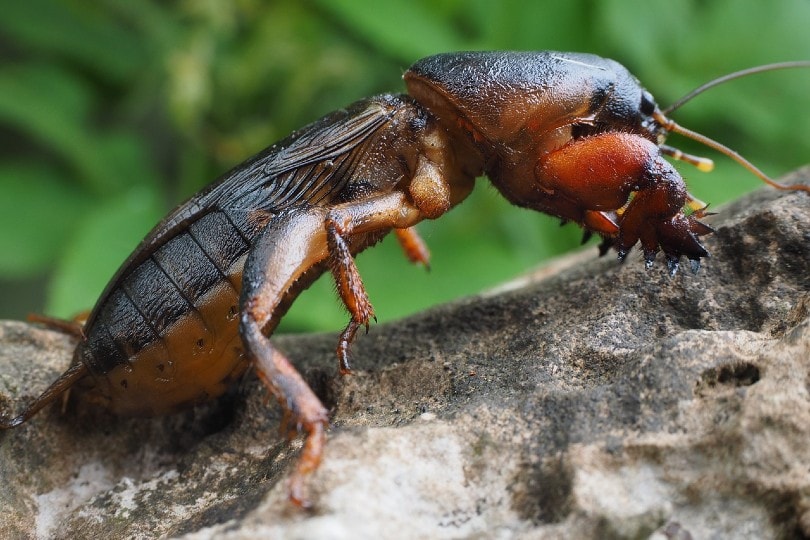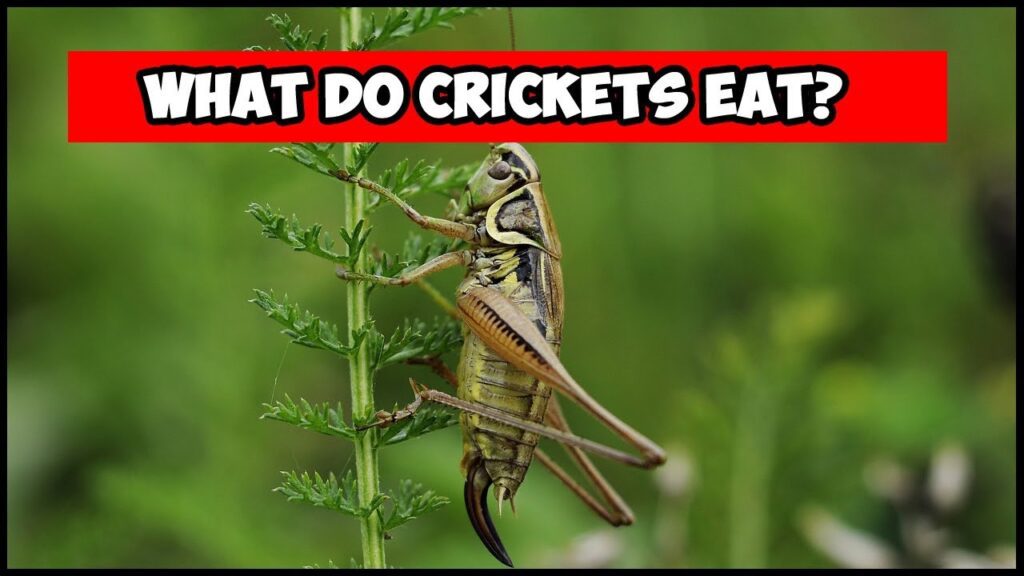Crickets are omnivorous creatures with a varied diet. In the wild, their menu includes a mix of plants, fungi, smaller insects, and decaying organic matter. However, when kept as pets or used as feed for reptiles and birds, their diet is often supplemented for optimal nutrition. In captivity, crickets benefit from a balanced diet comprising high-quality cricket feed, fresh vegetables like carrots and leafy greens, and a moisture source such as water gel. Understanding what crickets eat is crucial for maintaining their health and ensuring they provide the best nutrition for pets that consume them.
Key Components of a Cricket’s Diet:
- Cricket Feed: High-quality commercial cricket feed provides essential nutrients and is a staple in their diet.
- Fresh Vegetables: Crickets thrive on a diet rich in fresh vegetables like carrots and leafy greens.
- Moisture Source: Water is essential for crickets. Water gel or fresh fruits with high water content serve as hydration sources.
- Protein-Rich Foods: Insects, small spiders, and decaying organic matter contribute to the protein intake of crickets.
Sample Cricket Diet Table:
| Food Category | Examples |
|---|---|
| Cricket Feed | Commercial cricket feed pellets |
| Fresh Vegetables | Carrots, kale, spinach |
| Moisture Source | Water gel, fresh fruits |
| Protein-Rich Foods | Insects, small spiders, decayed organic matter |

Unlocking the Culinary World of Crickets: A Deep Dive into What They Devour
Crickets, those tiny, chirping insects that often serenade us during warm summer nights, have a diverse and fascinating diet. While many might not think twice about what crickets eat, these creatures play a crucial role in various ecosystems, and understanding their nutritional needs is essential, especially for those who keep them as pets or use them as feed for other animals.
Jason Kelce’s net worth: How Much Does Jason Kelce make!!
The Omnivorous Palate of Crickets
Crickets, by nature, are omnivorous, meaning they consume both plant and animal matter. In their natural habitat, they feast on a spectrum of items, including plants, fungi, smaller insects, and decaying organic matter. This diverse diet not only sustains them but also contributes to the ecological balance in their ecosystems.

In the Wild: A Culinary Adventure for Crickets
Picture a lush field buzzing with life, and in the midst of it, crickets foraging for their next meal. In this wild setting, crickets engage in a culinary adventure, munching on a buffet of vegetation, from grasses to leaves. They aren’t picky eaters and happily devour fungi, providing an essential service by aiding in the decomposition process of organic matter.
Cricket Cuisine in Captivity: Tailoring a Nutrient-Rich Diet
For those who raise crickets in captivity, whether as pets or as a food source for reptiles and birds, providing a nutrient-rich diet is paramount. This ensures the health of the crickets and enhances their nutritional value for the animals that consume them. So, what’s on the menu for crickets in captivity?
Is Forrest Gump Movie Based on a True Story
Active Choices in Cricket Cuisine:
- Cricket Feed Revolution: Embrace the power of specially formulated cricket feed. This revolutionary blend contains essential nutrients that cater to the specific dietary needs of crickets, ensuring they thrive in captivity.
- Fresh Vegetables Galore: Elevate their diet with a burst of freshness. Carrots, packed with vitamins, and leafy greens, rich in minerals, become a cricket delicacy that not only adds vibrancy to their diet but also enhances their nutritional profile.
- Hydration Excellence: Active crickets need hydration. Instead of a passive water source, introduce water gel into their diet. Alternatively, juicy fruits can be added, providing both a hydrating and flavorful element to their meals.
- Protein Power-ups: Recognizing their omnivorous tendencies, incorporate protein-rich foods into their diet. Insects, small spiders, and even a smattering of decaying organic matter contribute to the protein intake of these lively insects.
Creating a Symphony of Flavors in a Cricket’s Bowl
To truly understand what crickets eat, it’s crucial to appreciate the synergy of their diet. Picture a bowl filled with cricket feed pellets as the backbone, surrounded by vibrant carrots and a medley of leafy greens. In the center, a water gel oasis keeps the crickets hydrated, while the periphery offers a selection of protein-rich delights – insects, spiders, and a touch of decayed organic matter.
The Dynamic World of Cricket Culinary Arts: Active Engagement Matters
Keeping crickets in captivity is not just a passive activity; it’s a dynamic engagement with the needs of these fascinating insects. Active choices in their diet contribute to their overall well-being, affecting not only their health but also the quality of nutrition they provide when consumed by other animals.
The Ripple Effect: From Cricket Bowl to Animal Kingdom
As crickets consume this carefully curated culinary ensemble, the ripple effect extends beyond their small world. The nutrients they absorb translate into enhanced vitality. When these crickets become part of the diet of reptiles, birds, or other animals, the nutritional value is amplified, creating a positive cycle of health and vitality in the animal kingdom.
Challenges and Solutions in Cricket Nutrition: An Active Approach
Despite the seemingly straightforward task of feeding crickets, challenges can arise. From ensuring proper hydration to addressing dietary deficiencies, an active approach is needed. Regularly assess the health of the cricket colony, observe their feeding patterns, and make adjustments as needed to optimize their nutrition.
In Conclusion: The Active Art of Cricket Nutrition
In the intricate world of cricket nutrition, each element plays a vital role in creating a balanced and vibrant diet. From the active choices made in their feed to the dynamic flavors of fresh vegetables and the protein-packed additions, it’s an art form that goes beyond passive feeding. So, whether you’re a cricket enthusiast, a pet owner, or someone exploring the world of sustainable protein sources, embracing the active art of cricket nutrition unlocks a world of possibilities.
FAQ
- What is the natural diet of crickets in the wild?
- In the wild, crickets consume a variety of items, including plants, fungi, smaller insects, and decaying organic matter.
- Do crickets eat vegetables?
- Yes, crickets eat vegetables, and including fresh options like carrots and leafy greens in their diet is beneficial for their nutrition.
- What is the significance of protein in a cricket’s diet?
- Protein is crucial for crickets, and they obtain it from various sources such as insects, small spiders, and decaying organic matter.
- Can crickets survive on a solely plant-based diet?
- While crickets are omnivores, incorporating both plant and animal matter into their diet, a solely plant-based diet may not provide all essential nutrients.
- How does hydration factor into a cricket’s diet?
- Hydration is essential for crickets, and options like water gel or juicy fruits serve as active sources of moisture in their diet.
- What is cricket feed, and why is it important?
- Cricket feed is a specially formulated pellet containing essential nutrients. It is important for ensuring the overall health and nutrition of crickets in captivity.
- Are there specific challenges in cricket nutrition that need attention?
- Yes, challenges such as maintaining proper hydration and addressing potential dietary deficiencies require active monitoring for optimal cricket health.
- How does a cricket’s diet impact the nutritional value for animals that consume them?
- The nutrient-rich diet of crickets enhances their nutritional value when consumed by other animals, creating a positive cycle of health in the animal kingdom.
- Can I feed wild-caught insects to crickets in captivity?
- While crickets eat insects in the wild, it’s advisable to provide a balanced diet in captivity to ensure they receive all necessary nutrients.
- What role does the diet of crickets play in their overall well-being?
- The diet of crickets actively contributes to their well-being, affecting not only their health but also the quality of nutrition they provide when consumed by other animals.

